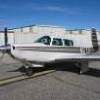Power settings and performance for rocket (Not cruise)
-
Members Online
- mike_elliott
- Bytes
- MDMooney
- Stephan Kablitz
- Kent Taylor
- TangoTango
- Robert Hicks
- Larry
- MatthiasArnold
- AH-1 Cobra Pilot
- Ragsf15e
- jrod_stat
- Ryan ORL
- Slick Nick
- clh
- PT20J
- joepilotmooney
- IvanP
- Justin Schmidt
- hazek
- ltdoyle
- Jackk
- ad5ut
- atpdave
- donkaye, MCFI
- Fly Boomer
- Jakes Simmons
- rklems
- Fritz1
- Rick Junkin
- N201MKTurbo
- hammdo
- Marcopolo
- Stubby
- eman1200
- jamesyql


Recommended Posts